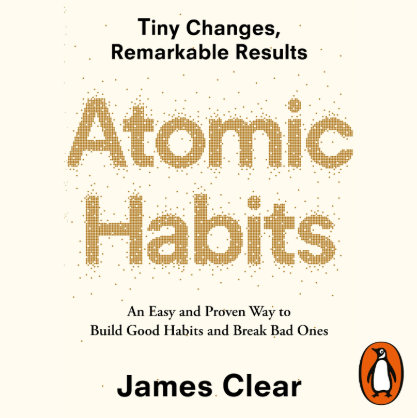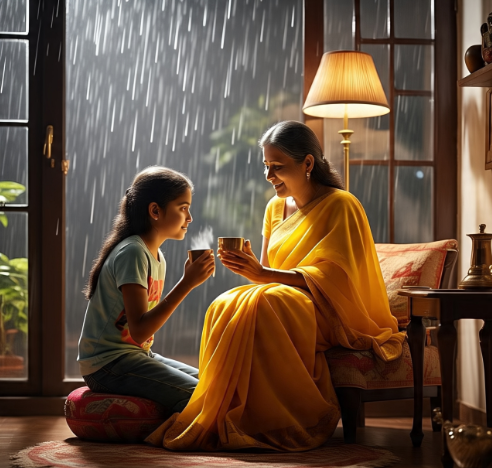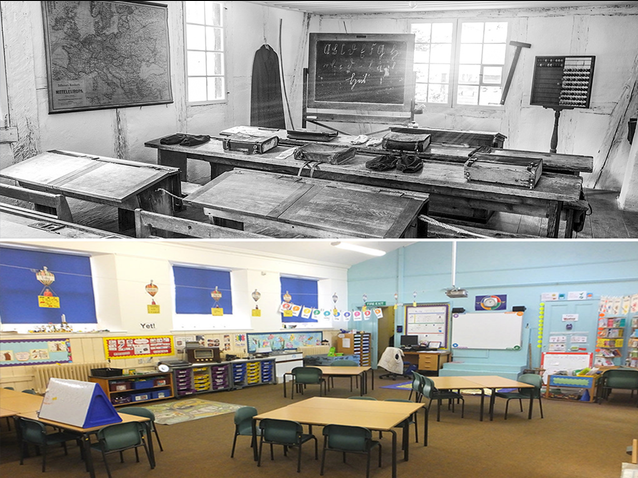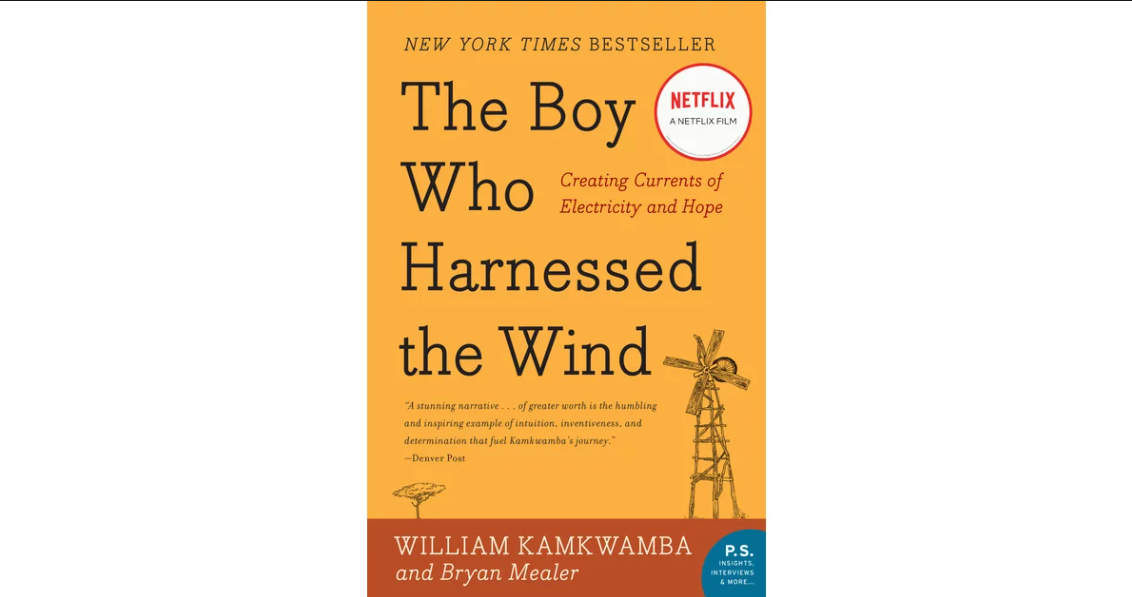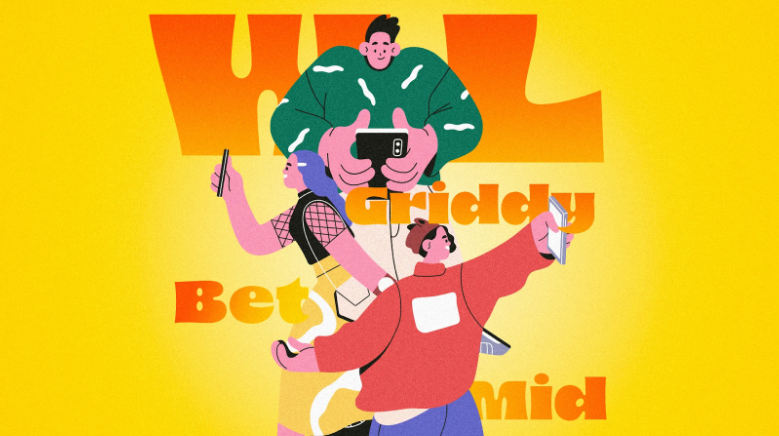I recently read Atomic Habits by James Clear, and I must say it was a truly eye-opening book. It talks about how tiny changes in our everyday habits can lead to big improvements in the long run. The author explains that we don’t need to completely change our lives overnight—just focusing on small, consistent improvements can make a huge difference over time.
What I liked most about the book was how simple and relatable the language was. Even though it is written by a foreign author, it doesn’t feel heavy or complicated. There are many real-life examples and stories that make the concepts easy to understand. One idea that really stayed with me was about building habits based on the kind of person we want to become. For example, instead of saying, “I want to study better,” we can say, “I am someone who enjoys learning and focuses well.” This small shift in mindset actually makes a big difference.
After reading the book, I’ve started trying to wake up earlier and reduce screen time during study hours. It’s not perfect yet, but I can already see small improvements. The book also taught me that even if we fail once in a while, it’s important to get back on track rather than give up.
I would definitely recommend Atomic Habits to other teenagers, especially students in India. It is a very practical and motivating book that can help anyone improve their habits and achieve their goals.
Setting – A living room in an apartment in Mumbai
Rain pitter patters against the grill as Advita (10th std) and her mother, Radhika, sit in the hall with hot chai mugs in their hands.
Advita (voice fatigued, half-smiling): Mom… school resumed in June, and May was just endless prep classes—tuitions, mocks, study groups. It’s not boards themselves that I’m afraid of; it’s the incessant din. My school posts last year’s topper photos, relatives send me text messages every weekend, ‘Have you begun boards prep?’ Coaching classes test us every week and categorize us based on scores. Everyone assumes I’m on. It’s so extra( extra dramatic).
Radhika: I agree, beta. Pressure has grown much more than it was three decades ago. When I was in the 10th, there was no online coaching or high-tech mocks. We didn’t even have teachers in our Kendriya Vidyalaya. All we had were some textbooks and classmates. But even then, expectations were real
Advita: But at least you never had your cousin’s expectations, weekly aunties checking in, or group WhatsApps treating every test as a referendum or the social media downpour on how to top the exams, how to study like toppers, how not to fail. This is a continuous vibe check ( sensing the mood) —a pressure meter never off.
Radhika: Exactly. This pressure wave—it’s all over the place. Schools display high scorers, and everyone tells you how focused or invested they are. But listen—being a statistic is not what you are. You are the protagonist of your own story, not another percentile.
Advita: I do want to be locked in, not solely for board prep… I want calm and purpose, not burnout. And the constant comparisons? Last month, I felt like I was getting an L( loss or failure) before I even began, just because I didn’t have a coaching pass like half the class.
Radhika: Beta, that isn’t your loss or failure unless you make it so. You set the terms. This is your unique story.
Advita: I just want to prep smart and not feel like I’m drowning. I want to breathe, remain true to myself.
Radhika: Exactly, that is the way.
Advita: It’s crazy… some days I’m so exhausted that even studying is tiring.
Radhika: Then it’s time we make a plan—your plan. One that brings focus and breaks.
Advita: Really?
Radhika: Yes. You deserve space for focus and chill. Excellence isn’t texting ‘100’ to your aunt or friends —it’s being yourself while you prep.
They share a smile. The rain slows; their atmosphere softens.
Advita: Thanks, Mom, for understanding me. I think I can prepare with complete focus —but still breathe. And if May appeared to be the biggest failure? That was only a beginning plot. I still have time.
They tap chai glasses—to clarity, calm, and a mutual promise of authenticity over board pressure.
Advita’s tale is not one of beating the system—it’s one of setting her own pace, claiming ownership of her prep, and remaining herself amidst the board exams chaos. Even in a pressure-filled world, staying true to oneself and giving the best.
( The above article is largely inspired by my real-life conversations with my mother about how I should meet the pressures, stay positive, and face the challenges as I prepare for my 10th Boards.)
The trees softly move as the winds buffet against the wood,
The palms of my hand move as I shield my face from the glare of the sun.
The koels sing in rains anticipatory mood,
The beauty of the flowers rivalled by none.
The dust of the old months has gone by,
Leaving only a path of heat and haze in its wake.
The coastal city for relief does cry,
All that is done by me is to stay on the edge of the lake.
The tiredness is not unfounded,
The sweltering summer saps the soul.
All people can do as the heat rises is to be astounded.
The tropical warmth burns the feet through the sole.
The city’s restlessness seems to reach its peak.
The traffic slowly stops as tempers and temperatures both slowly come to a boil.
The people driving continue their jostling matches as the passengers recollect their long forgotten holiday on that one distant Lonavala peak,
Even the plants dry as they take the last drops of water from the soil.
The parched land aches for even a drop from the sky,
The dirt needs to be washed away.
Above, as the birds fly,
And night slowly rolls in front of day.
The darkness with only the pale glimmer of moonlight,
Brings large, dark clouds, long hoped for.
And before the sun’s bright,
Water from the heavens starts to pour.
First a drop, then two, and then a shower,
As the peacock spreads its plume.
And like the opening of the flower,
June again comes to bloom.
There was a time — not all that long ago — when the arrival of summer holidays could mean only one thing: freedom. Unstructured, idyllic, and bursting with simplicity. The summer closing of the school year was preceded by dusty schoolbags stored in cupboards, neat report cards presented to relatives, and a hastily packed suitcase to travel to grandparents’ houses. Only the mango trees’ calendar, the local cricket matches, and the nocturnal storytelling sessions on rooftops mattered.
As a parent now, I find myself reminiscing at length over the striking difference between such idyllic childhood summers spent doing nothing and the near corporate-level amount of planning involved in going through my own child’s school vacation. Back then, holidays were meant for relaxation and spending time together. Now, they are accompanied by an agenda: holiday work, coding camps, personality development sessions, foundation courses for competitive exams, and skill-building workshops. Along the way with this, the essence of the “holiday” appears to have undergone a complete transformation.
The Happiness of Returning to School — Then and Now
Even resuming school had its own appeal. We didn’t bother with stationery brands or fret over school bag ergonomics. A new set of notebooks wrapped in brown paper, a new bottle of water, maybe a compact lunchbox — and we were set. The first day at school was a meet-and-greet with classmates and teachers, replete with guileless excitement, rather than trepidation over the unit tests already planned for week one.
School preparation today means days of shopping, highly detailed planning, orientation sessions at school, and mental preparation that could match preparation for an interview for a job. The children, already burdened with the expectations of performing well, move into a new grade with stress and detachment, and usually lose the pure joy of learning itself.
Summer holidays in the past meant becoming part of a larger joint family system — living with grandparents, listening to family stories, learning traditional games, and helping with household chores. One learned life skills through imitation and osmosis — helping Dadi roll chapatis or accompanying Nana to the local market. Bonds were built not through workshops, but through shared lives.
Cousins were our fellow conspirators, the veranda was the playground, and evenings were for telling stories. These activities grounded us in culture, identity, and belonging.
Today, holidays are regarded as a time to “invest” in the child — fill gaps, get ahead of the curve. The idea of merely being a child on vacation is growing less common. Parents — good-hearted, sure — feel obligated to make time out of school productive. We place our kids in a merry-go-round of classes and camps, meticulously scheduling each minute. Family time takes a backseat to Zoom yoga or chess class. Grandparents are sometimes limited to FaceTime calls, sandwiched between music lessons and mental arithmetic.
This change isn’t without rhyme. The world is more competitive. Skills must be multi-dimensional. Kids see more, compare more, and are pressured more. We parents want them not to fall behind. We want them to be confident, versatile, and prepared for an unpredictable future.
But in the process, have we produced a climate that’s more stressful than helping? Have we lost sight of the fact that children also learn through boredom, through daydreaming, through experimentation on their own?
While structured learning has its place, unstructured time fosters creativity, self-reflection, and emotional growth. The best conversations happen not when scheduled, but when they arise organically — during a lazy afternoon game, or while sharing a meal without a clock ticking nearby.
As a parent, I don’t believe in rejecting everything new or clinging blindly to the past. But I do believe in balance.
Maybe the perfect summer is not a replication of either trend, but one that finds middle ground. A vacation where a child can have a morning pottery session and afterwards cook pakoras with his grandma in the evening. A break where the study of a new language is combined with playing in the park barefoot. A time when growth is coveted, but emotional repose is not compromised.
Kids don’t require perpetual stimulation. They need substance. They need to be trusted, not constantly scored. And most of all, they need room to explore who they are when they’re not being instructed how to turn out.
The pressure on children today necessarily spills over onto parents as well. We are always at war with ourselves between wanting to provide the best for our children and preserving their innocence. We tread a tightrope — wanting to allow them to breathe while fearing that they might fall behind.
But if we can remind ourselves — and them — that achievement is constructed not just on schedules and skill sets, but on confidence, on resilience, and on love — then maybe we can reinvent our summers and school years to be something more edifying.
So, as we go back to school and again stand in line at bookstores and chore charts, let us take a moment to ask: are we equipping our children with life, or merely the next exam? Are we providing them with happiness, or merely a resume?
Let us let them carry not only heavy backpacks, but also light hearts.
Hello! My name is Aarav and I am 10 years old. I went skating for the first time when I was six. My friend asked me to go to the park where she had roller skates. I wobbled, fell a couple of times, but it was exciting! I had the wind in my face and could hear the wheels rolling—I knew immediately that I wanted to skate every day.
I first practiced in my driveway. I used knee guards and a helmet because my mom told me safety is really important. I kept falling over, but I enjoyed getting up again. I then signed up for a skating lesson. My coach tells me that skating helps you build balance and coordination, and I know it true—my legs are stronger every day
It’s also a cool way to be healthy. Skating is a good exercise for me, and I’m always moving rather than sitting there watching videos. Also, when I go skating with my friends, we laugh, we race, and we teach each other new tricks. It’s like one big happy team.
Learning how to skate well has given me confidence. Initially, turns and jumps were difficult. But one day, I made my first smooth turn—and I felt like a superhero! I learned that with skating, I must keep practicing and never give up—no matter if I fall, I always get up again
Now I skate nearly daily after school. I do rolls, turns, even attempt tiny jumps. One day I hope to be able to skate really quickly on ramps and perhaps join a skating club!
I enjoy skating because it’s enjoyable, keeps me healthy, and helps me gain confidence. If you have not tried it yet, come skate with me—I guarantee it’s awesome!
Today’s fast-paced and digitally enhanced world demands that we be competitive and adaptable. Kids are no exception. The aspiration of watching children succeed in various fields on one hand and giving them a fun-filled childhood on the other is indeed a catch-22 situation for many parents today. How nice it would be to see our children enjoy everything they do without feeling any pressure! It is indeed possible to do so when there is creativity around.
Children relate to creativity based on individual perspectives. For some, it means to be artistic, for others to think out of the box, while a few consider it a means to an end. While all are right in their own sense, creativity can be a game-changer for children in their growing years.
Research has shown that children display maximum adaptability quotient from the age of 3 years to 14 years. They are curious, inquisitive, and question things happening around them. If creativity is pursued during these years, with a conscious effort to make it a norm rather than an exception in everyday life, it would indeed have a marked effect on them. It would help them to imbibe qualities that would change their perspective towards everything from studies to sports and from relations to emotions. What are these qualities? Let us look at the most crucial ones.
- Creativity makes children OPEN-MINDED. A simple school activity of submitting an essay can be presented in unique ways like an essay with a portrait of the personality, a collage of text and pics or an essay submitted with calligraphy art, thanks to creativity. We often come across children who question why trees can’t be purple or why our hair can’t be in a shade of green instead of the usual colors. These seemingly childish questions display their creative bent and need to be nurtured rather than corrected.
- It makes their THINKING NON-LINEAR. Armed with it, kids do not shy away from problems or issues faced by them. They would rather take it as a challenge and try to find alternative ways to crack it while making it fun. Learning important historical events using acronyms or specially formed sentences is one such example. Children who are interested in coding often find themselves drawn to solve STEM (Science, Technology, Engineering & Mathematics) problems. Interestingly, they apply the coding logic to a completely different activity, like learning a musical instrument, and make it fun.
- Creativity makes children RESPECT EFFORT & FAILURE. When they try to do things differently, they may not succeed in the first instance. However, renewed efforts to fulfil the task at hand with the intended results make them appreciate the time invested to do it. They do learn many things in the process even though success and satisfaction elude them the first time. The ability to accept failure and move on from it towards success helps them in all aspects of their lives.
Let’s think of a situation where a child has been assigned the task of building huts for a school science project. She decides to make huts of different sizes and different materials. She might not succeed in the first attempt. After many attempts however, she finds the most apt one for making the huts. The additional knowledge gained in this activity would help her on some occasion if not in this instance.
- Creativity builds IMAGINATION. Albert Einstein said that “Imagination is more important than knowledge”. Kids have unhinged imagination. Its right tapping can make them realise their hidden potential and likes. While creating an artwork a child’s desire to write a few lines about the artwork makes him/her realise his/her ability of creative writing. A simple activity of helping a senior citizen might motivate a young teen to develop an app to benefit them.
- Creative children display a higher EMOTIONAL QUOTIENT. It makes them active listeners & doers. They explore, discover, and communicate any creative process and realize the value of others’ thoughts & opinions. It also makes them accept criticism and channel it positively.
- Creativity builds CONFIDENCE. It helps them to try, experiment and innovate. They believe in themselves and their ability to carry out a task differently. It also builds SELF-ESTEEM. We all know the proud look on our children’s faces when they do small things for us like making a greeting card, doing a surprising chore or exhibiting a new hobby that they have learned.
- It makes children HAPPY. Creativity in any form gives us positive thoughts. This positivity percolates into an optimistic demeanour which makes them enjoy everything they do.
When creativity is imbibed as a behavioural trait it changes their perspective and outlook. They become SOLUTION SEEKERS. Their minds instinctively react to situations to make them better, find a way out, and better the existing. They accept challenges not with fear or because they must, but knowing that they can cope with them. They seek enjoyment in every single act of theirs. They find satisfaction in being creators and explorers. It assures them of their abilities. Aren’t these things that we want our children to have more than anything?
Creativity is thus the game-changer that can make children have a unique and distinct identity of their own. What are you waiting for? Let your child embark on this journey and find his / her trueself!!!
Is the match almost done?
The green, green grasses of the ground:
In the stadium, which is round.
Out come the players and go in their places:
The batsmen come and hold their bats like maces.
The first ball and it is out for a six;
The people say, do not bring such bowlers into the mix.
But then the second ball, angled such, into the stumps crashes low:
So the people praise the bowler in a tow.
Oh, but oh, the ball is dropped;
Why, oh why, can’t the ball be stopped?
The batsmen come and go;
But the runs never stop to flow.
Out strides the Captain, an all-rounder is he;
A good one, you say to the thee.
His experience and knowledge from his face are seen;
To the bowlers and the fielders, he is prepared to be mean.
The innings end, the score 312- 9is the score;
The spectators, however, wanted more.
Out stride the players of both teams;
Hoping to fulfil their dreams
The second innings start and the chasing team hits a six an over;
The opposing team asks, is it all over?
But then comes the star bowler and gets the batsmen out one by one;
Is the match almost done?
With just 12 off 2 balls needed, he tail-end player hits a shot;
The crowd shouts why can’t the ball be caught.
He hits out another one, and it is all done for the other team;
What’s left is triumph for one and for the other, broken hopes and shattered dreams.
TITLE: The Boy Who Harnessed the Wind
AUTHOR: William Kamkwamba and Bryan Mealer
I really liked “The Boy Who Harnessed the Wind” because it was super inspiring and made me feel like anything is possible if you work hard enough. The book is about a boy named William who lives in Malawi, a country in Africa. When his village goes through a really bad and devastating drought and famine, he comes up with an idea to build a windmill to help pump water and make electricity. All this to help the villagers in this tragic period of nature’s wrath.
One of the many things that impressed me in this book was the fact that William didn’t even have much schooling because his family couldn’t afford it. Instead, he taught himself by reading books at the library! He used junk parts like bicycle pieces and old motors to make his windmill. I thought it was really cool how he didn’t give up even when people thought he was crazy.
Sometimes the book was a little sad when describing the hardships faced by William’s family and the village. It made me appreciate everything I have more. I also liked learning about how things work, like how a windmill can create electricity. It made me want to tinker with things and create something new.
I would definitely recommend this book to anyone who likes stories about inventions, tinkering with what’s available to build something useful, characters showing grit and a no-quitting attitude, or just real-life heroes. William showed that even if you have almost nothing, you can still change your life — and even your whole community — if you believe in your ideas.
Communication is the key. It indeed is, provided that there is an exchange of ideas or delivery of messages as intended. In my household, communication is more like a gigantic comedy production—especially when my parents try their best to incorporate “Gen Z slangs” into mundane and routine conversations. What follows is a hilarious sequence of events that unfold many emotions – laughter, repentance, admiration, and a sense of belonging.
One might feel that, as a Gen Z, I am out here to make fun of parents’ travesties with Gen Z slang. On the contrary, I genuinely admire their spirit. It is not every day that we come across a millennial parent dropping “no cap” while bargaining with the sabziwala. But my parents? Well, they are one of a kind. Why? Simply because, between their chaotic WhatsApp forwards, endless YouTube rabbit holes, and muddled Google searches, they are convinced that they have mastered the Gen Z slang. The truth: they have not.
It all began on an uneventful Sunday morning. I was relishing my paratha for brunch when my mother sashayed into the living room wearing her newest saree purchase and chimed – “Beta, how is my vibe? I am slaying, no?”
First, I nearly aspirated my tea. Second, she pronounced “slaying” with the same energy and seriousness one might reserve for announcing a major crime. To top it all, she paired it with an energy of someone trying mightily hard to impress the audience with newly learned vocabulary words. .
“Uh, yeah, Mom. You’re… definitely slaying,” I said, trying my best to suppress my laughter. She did look lovely, but her animated delivery made it seem like she was all set to annihilate enemies at some battlefield rather than attend a wedding function. As if this was not enough, she leaned in and whispered almost like a fellow conspirator – I am lowkey serving looks, na?”
LOWKEY. SERVING LOOKS. NA. These words were uttered with the intensity of a prime-time Indian soap opera.
At that moment, all I wanted to do was to dive under the dining table and vow to let others know that I was just a casual acquaintance and not a family member. But instead, I smiled. Because honestly, not every millennial parent can have such a brave attitude.
If you think that was peak behaviour, buckle up because my father’s linguistic adventures make Mom’s attempts seem like Shakespeare took a wrong turn somewhere along the way.
My wonderful, nerdy, and eternally earnest father recently discovered the term “rizz,” which refers to one’s charisma.
One night at the dinner table, he casually proclaimed: “You know, back in my college days, I had so much rizz. All called me Mr. Rizzler.”
This sentence was followed by the dropping of the spoon by my mother and water spitting out from my mouth with the same force as water gushes out from a dam when the gates are opened. This was further followed by me dropping to the ground from my chair in silent hysterics. But my father, oblivious to the emotional carnage he had just unleashed, leaned back smugly and added: Those were my sigma days, beta.”
SIGMA DAYS. I seriously contemplated for a second moving to another planet. As if the happenings of dinner time were not enough, he shared a message to the family WhatsApp group: “Feeling major FOMO. Why no one telling me I’m lit? This sentence was completed with a barrage of emojis that included a dolphin, Statue of Liberty, firecrackers, and smileys, making all members scratch their heads through the night, trying to figure out the purpose of their usage.
These two incidents gave me an inkling of the things to come. I geared up for many such smaller, yet equally hilarious, linguistic misfires. Like when my mother reviewed my report card and said, “Your math marks are mid, but your essay was bussin’!”
(Translation: Math—mediocre. Essay—excellent.)
Or the time my dad admired the new neighbor’s car and, meaning to compliment it, said it looked “drippy.” He failed to notice the concerned glances from the neighbours.
And let’s not even discuss the day they threw me a “GOAT party”. Yes, to celebrate my exam results—complete with goat-shaped balloons, goat cupcakes, and a horrifyingly realistic goat headband. (They thought GOAT meant, well, an actual goat. Bless them.)
Yet with all the goof ups, hilarious to at times down right embarrassing situations and beyond the comedy of errors, there’s something genuinely touching about all this chaos.
My parents are trying.
They acknowledge that a generational chasm exists—one where they still think of waving hands to hire an auto while I can Uber a rickshaw driver without blinking. And unlike most of their millennial friends, rather than dismissing “youth culture” as frivolous, they’re making a sincere, and mostly disastrous but in an unharming way , attempt to bridge the gap, to fit into my world, to attempt to learn the way our generation communicates.
Every misguided “rizz” reference and every mistaken “slay” attempt is, at its heart, an act of love. They’re not just attempting to use Gen Z slang; they are trying to communicate like me, not bothering about the consequences. And honestly? That effort transcends vocabulary.
Sure, I still get quintessential secondhand embarrassment. Sure, I might never recover from hearing my dad refer to himself as “the original certified snack.” Sure, I may have developed a defeatist attitude every time someone misuses “mid.” But at the end of the day, when my parents say, “You’re so valid, beta,” or “Your fit is straight-up fire,” even if they mispronounce half of it, what they are really trying to convey is, “We see you. We’re trying to understand you. We love you. We are willing to learn your communicative jargon as we want to be a part of your world. And that’s a truly unbeatable vibe.
No cap.
The Earth has seen the evolution of millions of species over thousands of years. That is how we humans evolved from a species of monkeys. It may sound crazy, but evolution is indeed an insightful concept that sheds light on our past, present, and future.
Many animals have survived through obstacles that nature has presented them with. That has enabled some species to survive for millions of years, even before the evolution of human beings. The oldest living species, the cyanobacteria, is said to have existed for over 2.1 billion years.
However, most species are wiped out by natural causes, such as extinction-level events, human poaching, hunting, and other natural factors. One such animal that has faced extinction is the dire wolf. The dire wolf is a species of predator that roamed the Americas 125,000 years ago. These species of wolves were much stronger than present-day wolves, with stronger jaws and active hunting skills. This enabled such species to hunt larger animals such as bison, horses, and so on.
The species of dire wolves eventually went extinct during the Quaternary extinction event around 12,500 years ago. The Quaternary extinction event led to the demise of fifty-seven species, which included the woolly mammoth and the dire wolf. This extinction event paved the way for humans to evolve and hunt. This period saw climate change that led to the disappearance of many primary herbivores, which were prey for the dire wolves. The loss of such prey species and competition from other predators led to the decline of these species.
All the dire wolf species went extinct. Like most other species, it was thought that these species could never be brought back from extinction. However, due to a ground-breaking discovery, scientists at Colossal Biosciences, a U.S.-based company, have managed to bring the species of dire wolf back from extinction using gene editing of grey wolves. Three pups – Romulus, Remus, and Khaleesi – were brought into the world, exhibiting very similar properties to the original dire wolf by modifying the DNA of grey wolves, with the help of genetic engineering.
Genome editing, as complex as it may sound, is quite an interesting subject. As the name suggests, gene editing enables scientists to change and alter the DNA of any living species, which allows us to make changes in our characteristics and traits.
Scientists were able to study the DNA of dire wolves from fossils that were left over for thousands of years. In their research, they saw many similarities between the DNA of present-day grey wolves and dire wolves. Through genetic engineering, they were able to alter the mismatching DNA of the grey wolves to create the dire wolves. These dire wolves have unique howl sounds that are distinct from the sounds of current-day wolves. They are now being grown securely in an ecological preserve.
However, such genetic engineering comes with ethical issues as well. Improvements in animal gene editing can pave the way for human gene editing as well. In the future, parents could choose traits like intelligence, athleticism, or physical appearance, leading to a society where genetic enhancements become a privilege of the wealthy. This creates genetic inequality among people. This could lead to a future where genome editing creates societal biases and prejudices, favoring certain groups over others and creating inequalities.
Experts condemn bringing back such extinct species since they strongly believe that these are only grey wolves, modified to give dire wolf traits. Hence, they are not entirely dire wolves brought back from extinction. There are also concerns over bringing back such animals, their welfare, and other natural factors that accompany gene editing.
Gene editing holds many promises, offering cures for diseases and bringing back animals from extinction. However, the ethical challenges that it accompanies must be handled with caution. While it showcases advancements in gene editing, it also prompts a need for conservation. This technology must be approached with care, with both the need to make more advancements while keeping ethical issues in check.
